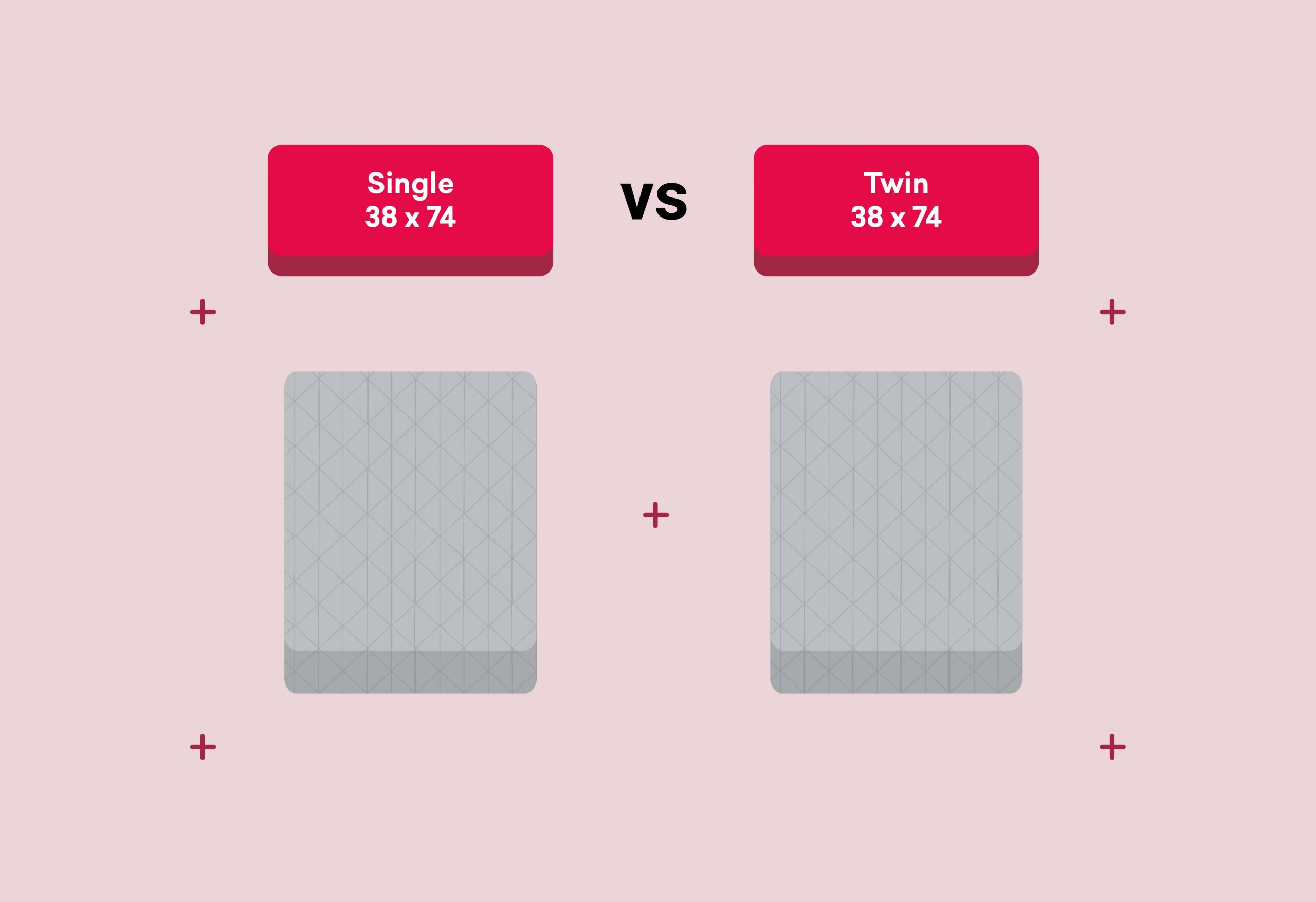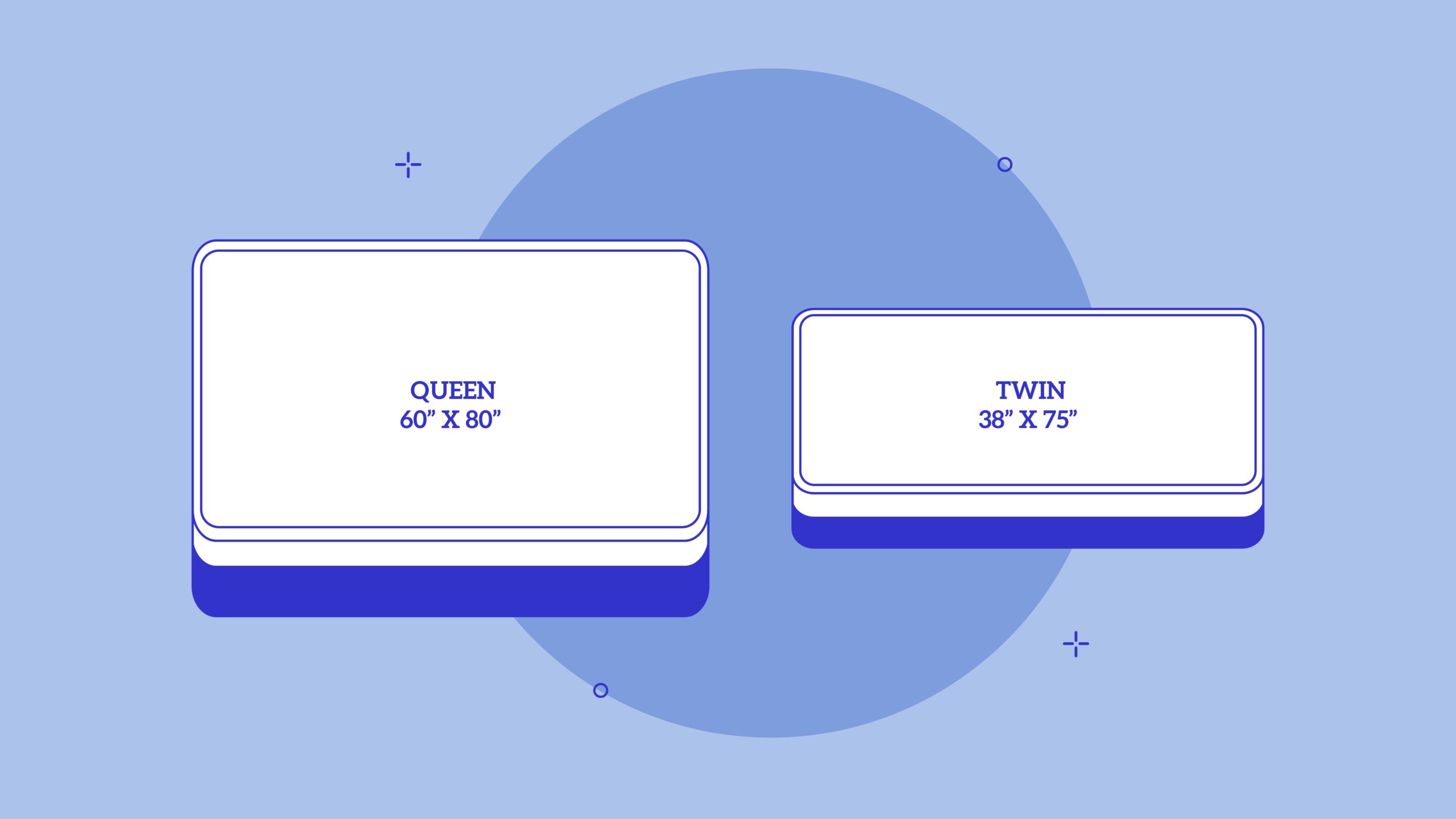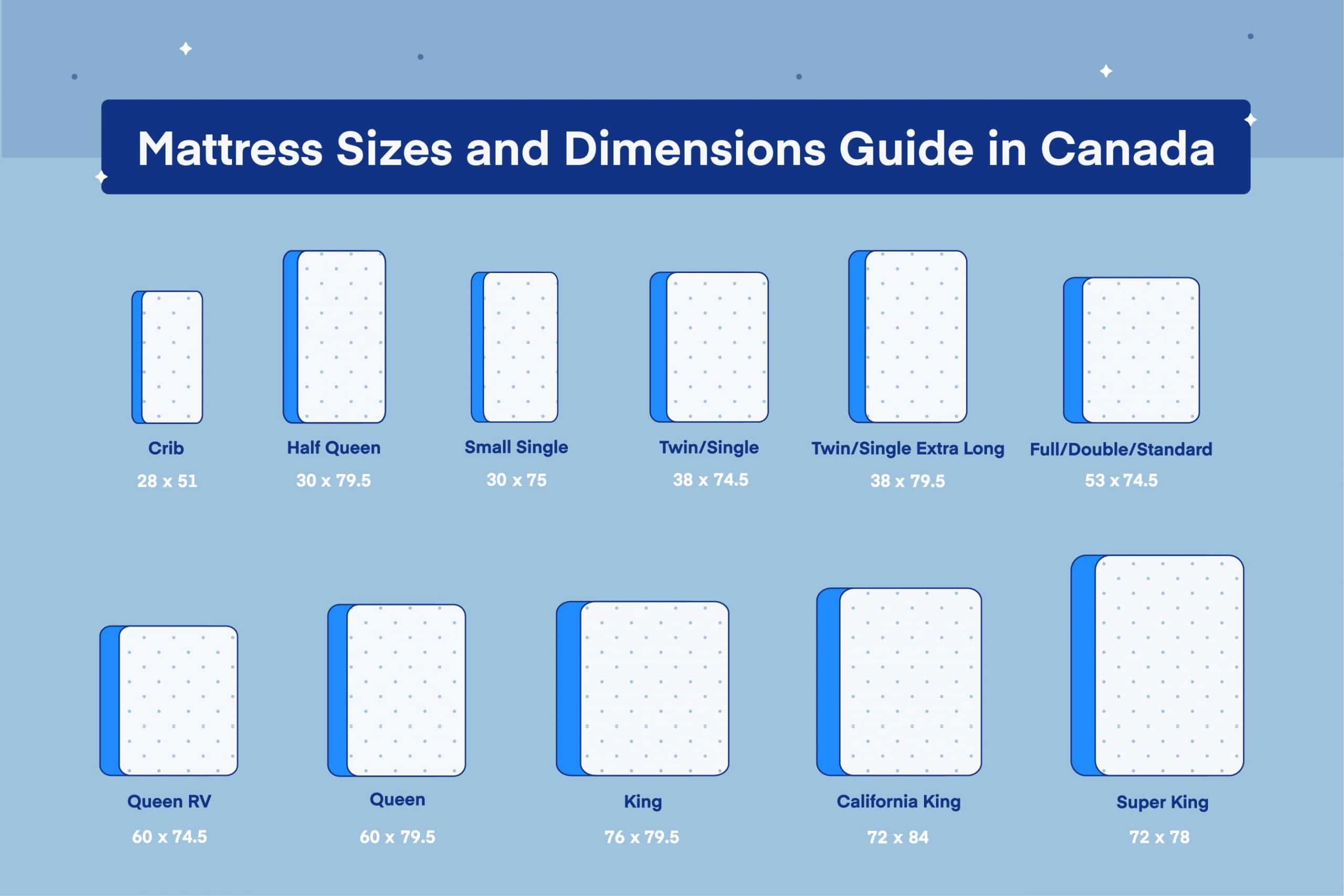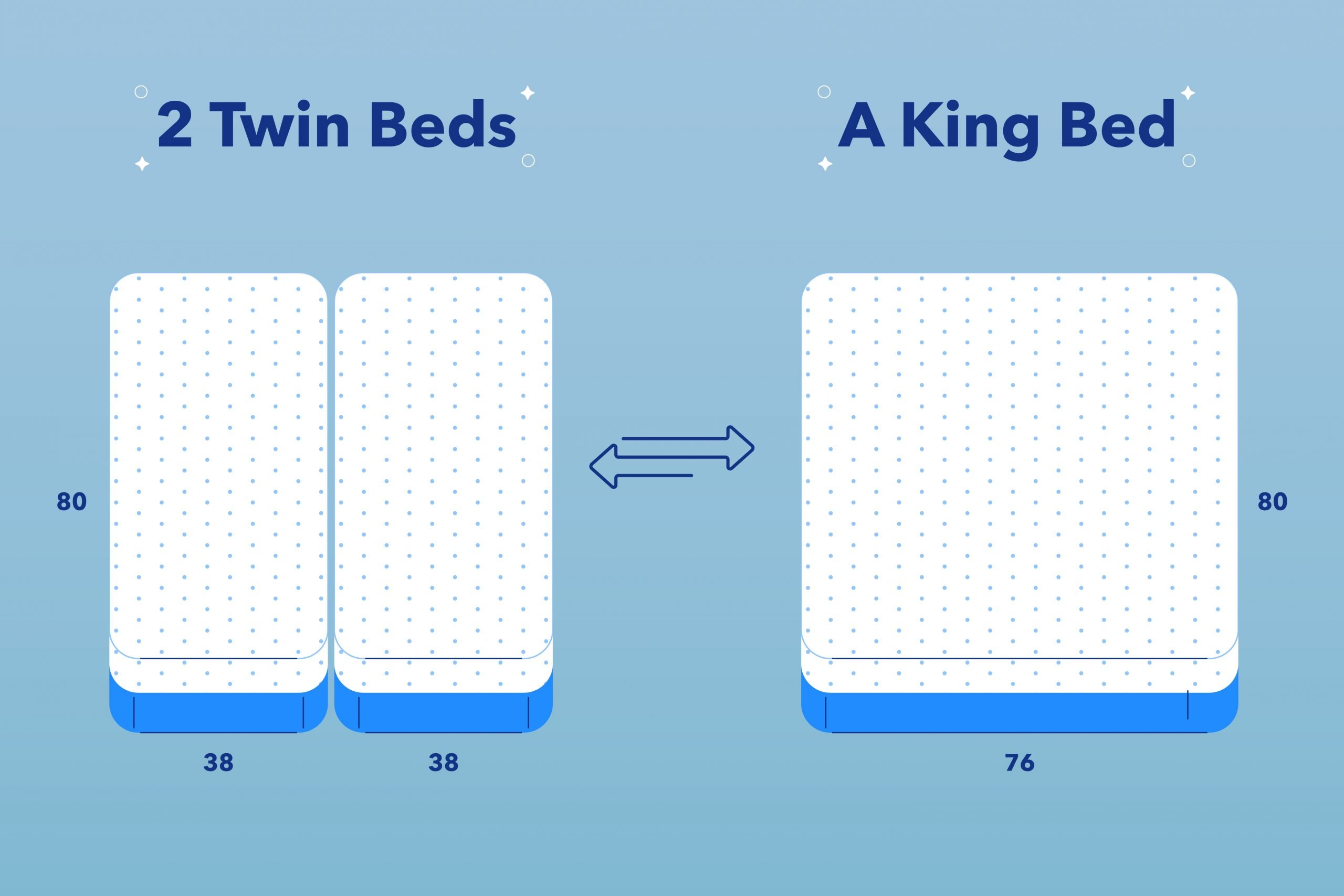When it comes to choosing a mattress, one of the most common questions is what size to go for. Two popular options are the narrow twin and the standard twin mattress. While they may seem similar, there are some key differences between the two that are important to consider before making a purchase. A narrow twin mattress is also known as a "twin cot" or "single cot" and typically measures 30 inches wide by 75 inches long. This makes it 6 inches narrower than a standard twin, which measures 39 inches wide by 75 inches long. While the length remains the same, the width can make a big difference in terms of comfort and space. Let's take a closer look at the main differences between these two mattress sizes.1. Narrow Twin vs Twin Mattress: What's the Difference?
Before we dive into the differences between narrow twin and standard twin mattresses, it's important to have a good understanding of the various sizes available. The twin size, also known as a "single," is the smallest standard size mattress and is typically used for children's beds or in guest rooms. It is 39 inches wide by 75 inches long. The narrow twin is a slightly smaller option, measuring 30 inches wide by 75 inches long. It is often used for bunk beds, day beds, or in rooms with limited space. However, there are other sizes available such as the twin XL, which is 39 inches wide by 80 inches long, and the full or double, which is 54 inches wide by 75 inches long.2. Understanding the Different Sizes of Twin Mattresses
When deciding between a narrow twin and a standard twin mattress, there are a few factors to consider. One of the main differences is the width, with the standard twin being 9 inches wider than the narrow twin. This may not seem like much, but it can make a significant difference in terms of comfort and space. If you are a single sleeper or have limited space in your room, a narrow twin may be a good option. It allows for more room to move around and can also fit in small spaces such as dorm rooms or studio apartments. However, if you have the space and prefer a larger sleeping area, a standard twin may be a better choice.3. Narrow Twin vs Standard Twin: Which is Right for You?
Like any mattress size, there are both pros and cons to choosing a narrow twin. On the plus side, it is a great space-saving option for smaller rooms. It also tends to be more affordable than a standard twin or larger sizes. Additionally, if you are a single sleeper, you may find the narrower width to be more comfortable and cozy. However, there are also some downsides to consider. The main disadvantage is the limited space for movement, which may be uncomfortable for some sleepers. It may also be too short for taller individuals. Additionally, finding bedding and accessories for a narrow twin may be more difficult as it is not as commonly sold as standard twin sizes.4. The Pros and Cons of a Narrow Twin Mattress
We briefly touched on the twin XL size earlier, but let's take a closer look at how it compares to the standard twin. As mentioned, the twin XL is 39 inches wide, the same as a standard twin, but it is 5 inches longer, measuring 80 inches in length. This makes it a better option for taller individuals as it provides more legroom. It is important to note that not all bedding and accessories will fit both a standard twin and a twin XL, so be sure to check the measurements before making a purchase.5. Twin vs Twin XL: What's the Difference?
When it comes down to it, the right mattress size for you will depend on your individual needs and preferences. If you have limited space, a narrow twin may be the best option. If you want more room to stretch out or plan on sharing the bed with a partner, a standard twin or larger size may be a better choice. It's also important to consider your budget, the size of your room, and any future plans (such as having a partner or children) before making a decision.6. Choosing the Right Mattress Size for Your Needs
As mentioned, one of the main benefits of a narrow twin mattress is its ability to save space in small rooms. This makes it a popular choice for guest rooms, dorm rooms, and studio apartments. It also allows for more room to move around and can make a room feel more open and less cluttered. In addition, a narrow twin mattress may be a good option for children's rooms as it is not as wide as a standard twin, making it easier for them to get in and out of bed and reducing the risk of falling off the bed.7. The Benefits of a Narrow Twin Mattress for Small Spaces
If you have decided that a narrow twin mattress is the best size for your needs, it's important to measure your space before making a purchase. Measure the width and length of the area where the bed will go, taking into account any furniture or other items in the room. Also, be sure to leave enough space around the bed for easy movement and access. It's recommended to have at least 2-3 feet of space on each side and at the foot of the bed.8. How to Measure for a Narrow Twin Mattress
Another common mattress size that is often confused with the narrow twin is the full or double size. The full size is 54 inches wide, making it 24 inches wider than a narrow twin. This makes it a better option for couples or individuals who prefer more space to sleep. The full size is also 75 inches long, the same as a narrow twin, so it may be a better option for taller individuals than a narrow twin. However, it is important to note that a full size mattress may not be suitable for smaller rooms.9. The Differences Between a Narrow Twin and a Full Mattress
Ultimately, the best way to find the perfect twin mattress for your needs is to consider your individual preferences and needs. Think about your sleeping habits, any physical limitations, and the space you have available. It may also be helpful to try out different sizes and firmness levels in person before making a decision. Remember to also consider the quality and materials of the mattress, as well as your budget. Investing in a good quality mattress can make a big difference in your sleep and overall health. In conclusion, the main differences between a narrow twin and a standard twin mattress are the width and the intended use. While a narrow twin may be a great option for small spaces or single sleepers, a standard twin provides more room for movement and may be a better choice for taller individuals or those who prefer a larger sleeping area. Consider your individual needs and preferences before making a decision and be sure to measure your space before purchasing a mattress.10. Tips for Finding the Perfect Twin Mattress for Your Needs
Differences Between Narrow Twin and Twin Mattress

Understanding the Different Types of Twin Mattresses
 When it comes to choosing a mattress for your bedroom, there are several options available in the market. Two popular choices are the narrow twin and twin mattress. While both may seem similar in size and shape, there are some key differences that set them apart. In this article, we will delve into the details of these two types of mattresses and help you understand which one may be better suited for your needs.
When it comes to choosing a mattress for your bedroom, there are several options available in the market. Two popular choices are the narrow twin and twin mattress. While both may seem similar in size and shape, there are some key differences that set them apart. In this article, we will delve into the details of these two types of mattresses and help you understand which one may be better suited for your needs.
The Size Factor
 The most obvious difference between a narrow twin and twin mattress is their size.
Narrow twin mattresses
measure
39 inches
in width and
75 inches
in length, making them
5 inches
narrower than a standard twin mattress. This difference in size may seem small, but it can make a significant impact on the overall comfort and space in your bedroom. The narrow twin mattress is ideal for smaller rooms or for individuals who prefer a snug sleeping space.
The most obvious difference between a narrow twin and twin mattress is their size.
Narrow twin mattresses
measure
39 inches
in width and
75 inches
in length, making them
5 inches
narrower than a standard twin mattress. This difference in size may seem small, but it can make a significant impact on the overall comfort and space in your bedroom. The narrow twin mattress is ideal for smaller rooms or for individuals who prefer a snug sleeping space.
Comfort and Support
 Another important factor to consider when choosing a mattress is comfort and support.
Narrow twin mattresses
are often
6 inches
narrower than a standard twin mattress, which can affect the level of support it provides. If you are someone who moves around a lot in your sleep, a narrow twin mattress may not be the best choice as it may not provide enough space to move freely. On the other hand, a twin mattress offers more space and support, making it a better option for those who prefer a bit more room to stretch out.
Another important factor to consider when choosing a mattress is comfort and support.
Narrow twin mattresses
are often
6 inches
narrower than a standard twin mattress, which can affect the level of support it provides. If you are someone who moves around a lot in your sleep, a narrow twin mattress may not be the best choice as it may not provide enough space to move freely. On the other hand, a twin mattress offers more space and support, making it a better option for those who prefer a bit more room to stretch out.
Price Point
 Price is also a critical factor to consider when purchasing a mattress.
Narrow twin mattresses
are often
cheaper
than standard twin mattresses, making them an attractive option for those on a budget. However, it is important to keep in mind that price should not be the only deciding factor when choosing a mattress. It is essential to consider your personal comfort and support needs as well.
Price is also a critical factor to consider when purchasing a mattress.
Narrow twin mattresses
are often
cheaper
than standard twin mattresses, making them an attractive option for those on a budget. However, it is important to keep in mind that price should not be the only deciding factor when choosing a mattress. It is essential to consider your personal comfort and support needs as well.
The Final Verdict
 In the end, the choice between a narrow twin and twin mattress boils down to your personal preferences and needs. If you have a smaller room or prefer a snug sleeping space, a narrow twin mattress may be the perfect fit for you. However, if you need more space and support, a twin mattress may be a better option. Whichever you choose, make sure to do your research and test out different options to find the best one for you.
In the end, the choice between a narrow twin and twin mattress boils down to your personal preferences and needs. If you have a smaller room or prefer a snug sleeping space, a narrow twin mattress may be the perfect fit for you. However, if you need more space and support, a twin mattress may be a better option. Whichever you choose, make sure to do your research and test out different options to find the best one for you.




































































































